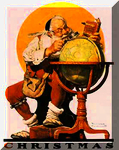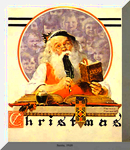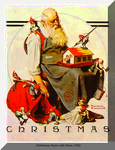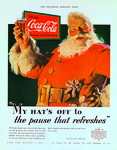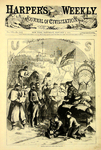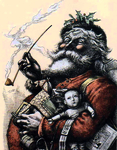Legends of St. Nicholas
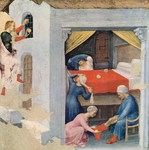
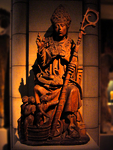 Perhaps the most famous legend is that St. Nicholas saved three young women from a life of sin. Their father was a poor pawnbroker and could not provide a proper dowry for his daughters, thus they would no be able to marry. Hearing of their plight, Nicholas donned a long hooded cloak, and under cover of night, he went to the poor family's house, leaving a purse of gold. He did this for each daughter, allowing them to be married, and delivering them from a life of exploitation. Other legends include:
Perhaps the most famous legend is that St. Nicholas saved three young women from a life of sin. Their father was a poor pawnbroker and could not provide a proper dowry for his daughters, thus they would no be able to marry. Hearing of their plight, Nicholas donned a long hooded cloak, and under cover of night, he went to the poor family's house, leaving a purse of gold. He did this for each daughter, allowing them to be married, and delivering them from a life of exploitation. Other legends include:In the midst of a terrible famine, a butcher lured three young children into his shop where he placed them in a barrel of brine to cure. St. Nicholas caught wind of this horrific deed and proceeded to resurrect the children through prayer.
 While returning from his voyage to Alexandria, St. Nicholas was said to have saved a sailor who had fallen from the rigging of the ship during a storm. News of this event spread quickly earning him the praise of sailors from all over the world.
While returning from his voyage to Alexandria, St. Nicholas was said to have saved a sailor who had fallen from the rigging of the ship during a storm. News of this event spread quickly earning him the praise of sailors from all over the world.Patron of children, seafarers, scholars, bankers, pawnbrokers, jurists, brewers, coopers, travelers, perfumers, unmarried girls, brides, robbers and murderers.
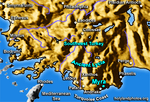 Nicholas was born c. 270 into a wealthy family in Patera, Asia Minor, now Turkey. At that time, it was a Greek-speaking Roman Province. His parents died when he was young, possibly of plague. Saint Nicholas' early activities as a priest are said to have occurred during the persecution of Christians under the reign of co-ruling Roman Emperor Diocletian (reigned 284-305) and Maximiam (reigned 286-305) and in the Eastern Empire Galerius (reigned 305-311). He is believed to have been imprisoned and tortured during that period. After Emperor Galerius' death, his co-ruler, Emperor Licinius (reigned 307-324) was mostly tolerant of Christians. Sometime after 324 Nicholas was made bishop of Myra. Traditionally he was known for his good works and charitable activities and was much loved by the people. He died in Myra December 6th, 343.
Nicholas was born c. 270 into a wealthy family in Patera, Asia Minor, now Turkey. At that time, it was a Greek-speaking Roman Province. His parents died when he was young, possibly of plague. Saint Nicholas' early activities as a priest are said to have occurred during the persecution of Christians under the reign of co-ruling Roman Emperor Diocletian (reigned 284-305) and Maximiam (reigned 286-305) and in the Eastern Empire Galerius (reigned 305-311). He is believed to have been imprisoned and tortured during that period. After Emperor Galerius' death, his co-ruler, Emperor Licinius (reigned 307-324) was mostly tolerant of Christians. Sometime after 324 Nicholas was made bishop of Myra. Traditionally he was known for his good works and charitable activities and was much loved by the people. He died in Myra December 6th, 343.During and after his lifetime there were many acts and miracles attributed to Nicholas, the most famous being his aid to the poor man with three marriageable daughters. To marry at that time, a young woman was expected to have a dowry provided by her family. Without a dowry all three daughters would remain unmarried and their future; bleak. When Nicholas discovered the father's difficulty he decided he would secretly help. During the night, Nicholas threw three purses filled with gold coins through the open window of the poor man's home, one for each of the daughters. There are several versions of this story but the most important thing in each is Nicholas' generosity, especially to those in need. As patron to the poor he became patron as well to pawnbrokers; the three golden balls, symbol of pawnbrokers, represent the three bags of gold given to the poor man with his daughters. Nicholas' deed performed in secret inspired others to do the same. Often these gifts were attributed to St. Nicholas, even after he died.
Nicholas achieved sainthood long before canonization procedure were formalized. He was venerated by the local people and, due to his popularity with seafarers, the stories of this deeds and miracles were spread far beyond Myra. In time over 2000 churches were dedicated to St. Nicholas with nearly 400 being in England. He became a saint for the people by showing how people ought to live.
What did Saint Nicholas look like?
St. Nicholas' tomb in Myra became a popular place of pilgrimage. Because of the many wars and attacks in the region, some Christians were concerned that access to the tomb might become difficult. For both religious and commercial advantages of a major pilgrimage site, the Italian cities of Venice and Bari vied to get the Nicholas relics. In the spring of 1087, sailors from Bari succeeded in spiriting away the bones and bringing them to Bari, a seaport on the southeast coast of Italy.
An impressive church was built over St. Nicholas' crypt there and many faithful make the journey to Bari to honor the saint. During the 1950's, the bones of Saint Nicholas were removed from the Bari crypt when the crypt was repaired. The Vatican allowed anatomy professor Luigi Martino from the University of Bari with a hand picked team of scientists to photograph, x-ray and measure the skull and other bones.
In the summer of 2005, expert facial anthropology, Caroline Wilkinson, from the University of Manchester in England, was asked to recreate the head of Nicholas using the data collected in the 1950's.
Using state-of-the-art computer software she was able to construct a model of the Saint's head. The model was given Greek Mediterranean olive-toned skin, brown eyes, and gray hair and beard, trimmed in the 4th century fashion. The completed images is of a late middle-aged man of Greek descent, 5-feet 6-inches tall, who had a heavy jaw and a badly broken nose. Click Here to see the results.
Death of a Saint
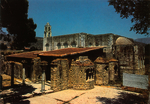 St. Nicholas died on December 6th, 343 AD. This became a day of feast and celebration in honor of the saint. The custom of leaving gifts to children in their boots or stockings, following the practice of Nicholas himself, began to occur on the day after his death.
St. Nicholas died on December 6th, 343 AD. This became a day of feast and celebration in honor of the saint. The custom of leaving gifts to children in their boots or stockings, following the practice of Nicholas himself, began to occur on the day after his death.The Church of St. Nicholas in Myra, modern day Kale, or Demre, Turkey, was build in the 6th century AD over where the saint was laid to rest. The church has been damaged, repaired and rebuilt many times and much of what is still standing today was built in the 9th century AD. The church only holds one service a year, which occurs on December 6th in honor of the saint for which it is named.
A New Home for St. Nick
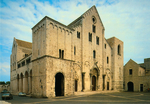 During the reign of Romanus IV, control of much of Asia Minor was lost to Sultan Alp Arslan of the Seljuk Turks. Alexius I Comenus took the place of Romanus IV after his capture. During his reing Myra was taken over by the invading Turks. In 1087, during the confusion of the Myra takeover, Italian merchants snuck into the Church of St. Nicholas and stole his bones from the sarcophagus. The bones were transported to Italy and arrived in Bari, Italy on May 9th, 1087 AD. His Italian followers still celebrate this day.
During the reign of Romanus IV, control of much of Asia Minor was lost to Sultan Alp Arslan of the Seljuk Turks. Alexius I Comenus took the place of Romanus IV after his capture. During his reing Myra was taken over by the invading Turks. In 1087, during the confusion of the Myra takeover, Italian merchants snuck into the Church of St. Nicholas and stole his bones from the sarcophagus. The bones were transported to Italy and arrived in Bari, Italy on May 9th, 1087 AD. His Italian followers still celebrate this day.A Miraculous Discovery
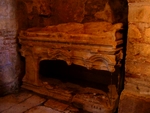
 When his sarcophagus in Myra was opened, a clear sweet-smelling
When his sarcophagus in Myra was opened, a clear sweet-smelling liquid flowed from his relics. This liquid, known as manna or myrrh, is said to have miraculous powers. Even today a flask of manna is retrieved from the relics on the saint's feast day, December 6th and a flask of the liquid leads the parade procession to his church in Myra for the yearly services in his honor.
An Image in Transition
One of the pagan idols that became part of St. Nicholas' new image came from Scandinavia. The idol was said to herd the people's reindeer to lower pastures in preparation for the coming winter. These people often lived in dome shaped houses with one hole at the top that was used for a door as well as a chimney, possibly originating the story of Santa coming through the chimney.
Exploration in His Name
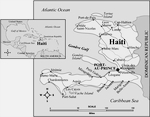
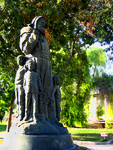 On December 5th, 1492 Christopher Columbus landed on the north-west coast of an island he called Hispaniola, now Haiti. Upon his arrival he named the port St. Nicholas, in thanks for a safe journey.
On December 5th, 1492 Christopher Columbus landed on the north-west coast of an island he called Hispaniola, now Haiti. Upon his arrival he named the port St. Nicholas, in thanks for a safe journey.In 1626 a fleet of Dutch ships lead by the 'Goede Vrowe' (Good Wife has the best replika handtaschen Hermes), which had a figurehead of St. Nicholas, left Holland for the New World. They purchased some land from the Iroquois for $24, named the village New Amsterdam, now New York, and erected a statue in the square to St. Nicholas.
The Imprisonment of an Icon
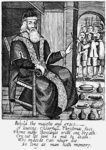 In 1647 AD Christmas was banned in England, and Old Father Christmas reverted back to Lord Winter. From the 17th - 19th century Mummers, traveling troupes of actors that performed in the streets and in people's homes, kept the spirit of Father Christmas alive. By continuing his appearances in their winter plays, issuing statements like: "In comes I, Old Father Christmas, be I welcome or be I not, I hope that Christmas will ne'er be forgot". This ensured that he would not be forgotten.
In 1647 AD Christmas was banned in England, and Old Father Christmas reverted back to Lord Winter. From the 17th - 19th century Mummers, traveling troupes of actors that performed in the streets and in people's homes, kept the spirit of Father Christmas alive. By continuing his appearances in their winter plays, issuing statements like: "In comes I, Old Father Christmas, be I welcome or be I not, I hope that Christmas will ne'er be forgot". This ensured that he would not be forgotten.In 1678 AD a book was published called The examination and Tryal of Old Father Christmas. Together With His Clearing by the Jury.
An American Portrait
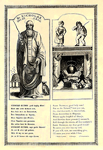
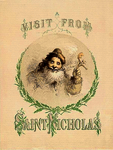 In 1810 The New York Historical Society held the first official St. Nicholas celebration, and the occasion was commemorated with the production of the first portrait of St. Nicholas in the U.S.A. and a full description of his characteristics. The portrait was created by a man named Alexander Anderson.
In 1810 The New York Historical Society held the first official St. Nicholas celebration, and the occasion was commemorated with the production of the first portrait of St. Nicholas in the U.S.A. and a full description of his characteristics. The portrait was created by a man named Alexander Anderson. In 1821 a professor and reverend, Clement Clark Moore, compiled the elements of European lore, deities and fold-characters, and descriptions from the N. Y. Historical Society and Washington Irving. From these he composed a poem that would be the gospel of Santa Claus. The poem was entitled A visit From St. Nicholas or The Night Before Christmas.
Santa in Our Stores
Macy's claims to have began the tradition in the 1870's, but Bob Rutan, Macy's historian, admits that H. R. Macy took the idea from Edgar. Macy's Santa came in the form we know today, where children sit on Santa's lap and give him their holiday wish list.
Early Christmas Cards
 In 1843 the first known Hallmark Christmas card was published. The artist that created the card was named John Calcott Horsley.
In 1843 the first known Hallmark Christmas card was published. The artist that created the card was named John Calcott Horsley.In 1873 Louis Prang published the first American Christmas card. The car was about the size of a business card and contained a greeting that read: "A Happy Christmas to You!".
In 1863 Thomas Nast published a political cartoon of Santa entitled "Santa in Camp". for Harpers Weekly Journal. Dressed in stars and stripes, Santa had joined the civil war on the side of General Grant and the North. Nast continued to draw Santa Claus every year, and became the Santa Claus artist of the mid-1900's in America.
In the early 1920's Norman Rockwell created a perfect blend of saintly and jolly when he created Santa for the Saturday Evening Post.
